Think of the Mekong River as the backbone of Southeast Asia. It’s the very pillar that ensures the area’s economic development. Take a trip down the Mekong and you’ll intimately discover the heart of Southeast Asian life. Thanks to some of the destinations below, I too discovered its unquestionable charm.

One of the longest rivers in the world
The Mekong’s size is impressive; it’s the 12th largest river in the world, and the 7th largest in Asia alone. It starts in the Himalayas in Tibet, and ends in the Mekong delta over 4,500 km downstream.

Discover six countries, their landscapes & lifestyles
Starting in Chinese Tibet, the Mekong runs through the golden triangle at the Burmese border, cuts through the centre of Laos and creates a natural border with Thailand over several hundred kilometres long. It then enters Cambodia, where it widens to become an enormous freshwater lake, Tonlé Sap, before continuing to Vietnam and draining into the South China Sea.
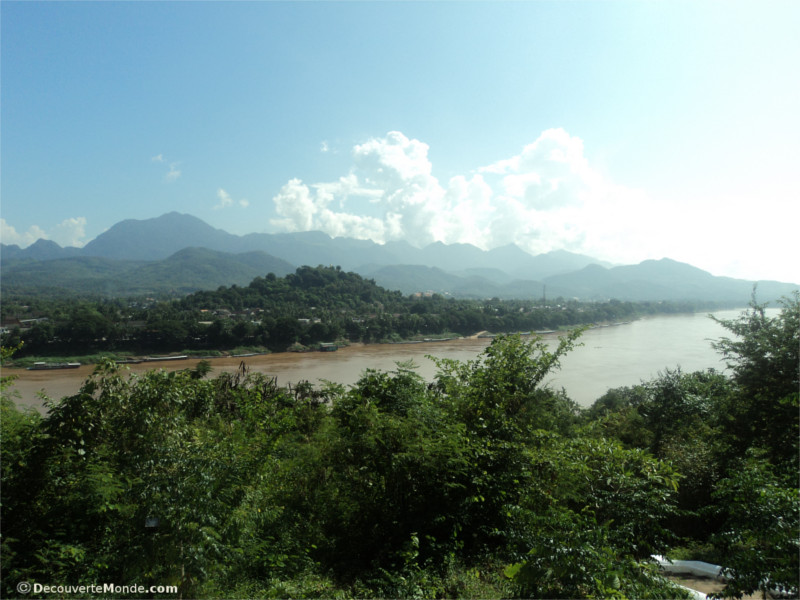
Resource sharing causes many geopolitical conflicts that continue to shake this region, creating tension between neighboring countries. Read on to discover which locations became significant on my trip as I discovered this magnificent part of the globe.

Yunnan
During my trip to Yunnan, China, I had no idea that the river in these beautiful Chinese mountains was the same that irrigated the fields in Vietnam, nourishing some of the best rice in the world, 4,000 km further south. This majestic river was always at my side when I trekked through the mountains to encounter the Tibetan people and other native groups that have always filled my wildest travel dreams.
It’s no wonder the Chinese named the river Lancang Jiang, or “Turbulent River”. Here are a few images I took at Lijiang, near the Jade Dragon Snow Mountain.
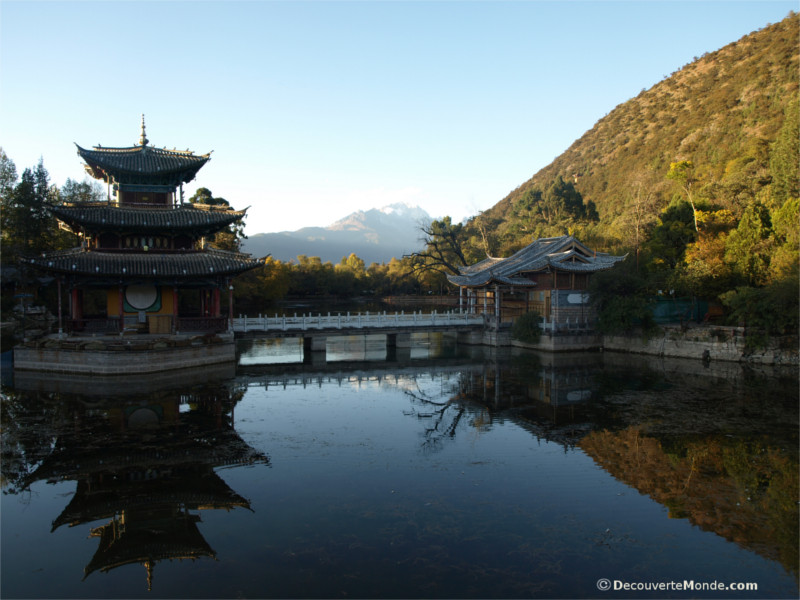
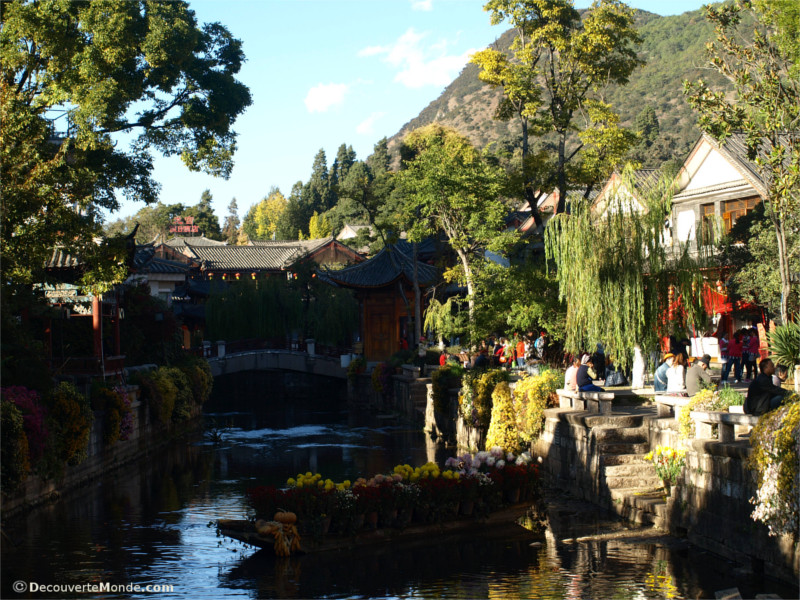
Mekong culture
The river flows along the entire length of Laos, and dictates Laotians’ way of life. The largest cities in the country sprung up right along its banks. Whether you’re in the North in the charming city of Julan Prabang, in the capital, Vientiane, in the villages in the South near the Thai border, or among the Four Thousand islands at the Cambodian border, the rhythm of daily life takes its cue from the Mekong. Laotians make the river banks their home, seek its nourishment, and use it as the site of many festivals.

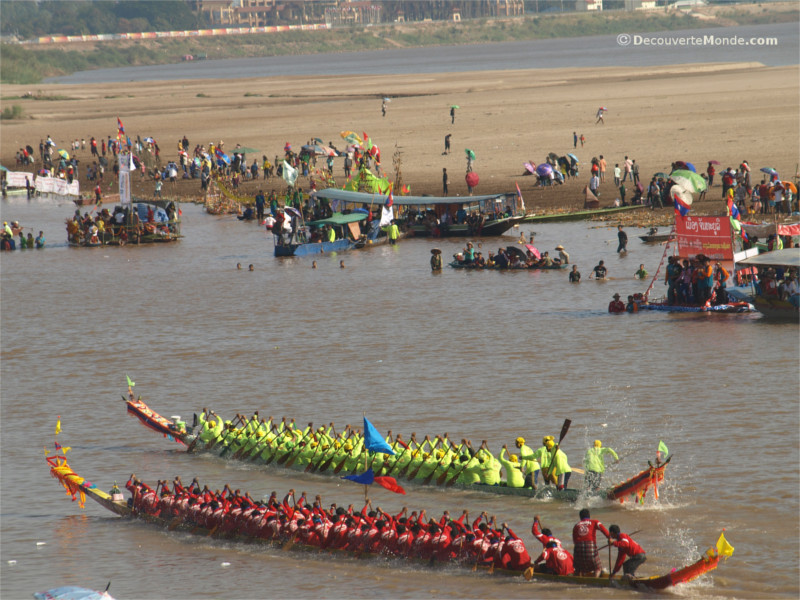
One of the biggest festivals in Laos is the dragon boat race in Vientiane. Thousands of people line the banks to encourage the regatta participants.
In October, during the Festival of Light, at the end of Buddhist Lent (also known as Vassa), floating paper lanterns and boats made from Saa (a type of Thai bark pulp) are carefully launched by the thousands. The river’s surface is radiant with these majestic offerings.
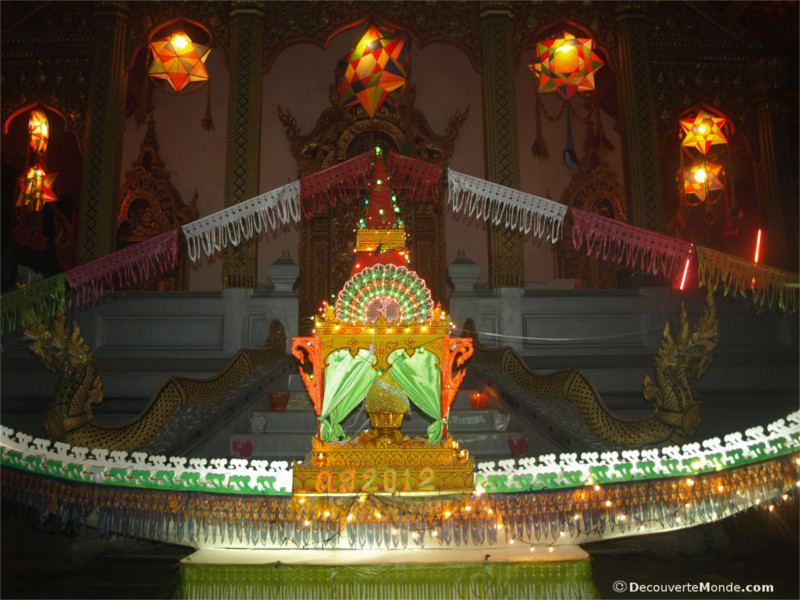
Travellers in Laos enjoy taking a short ride down the Mekong on a traditional wooden river boat. It’s not the most comfortable form of transportation, but it makes for a great cultural experience.
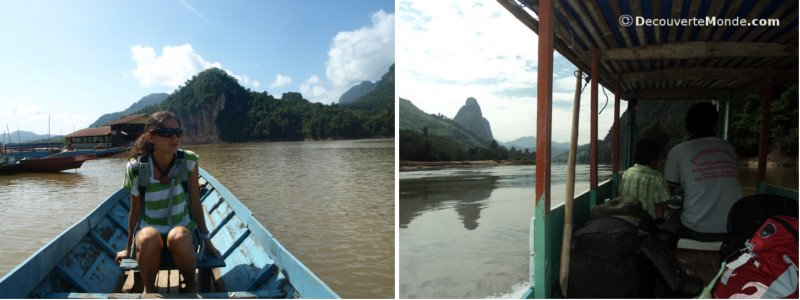
The impressive Mekong, after serving as Thailand’s natural northern border, leaves Laos via the Four Thousand Islands. Life and culture in this Laotian archipelago are slow and tranquil, despite the fast river that flows with even greater force towards Cambodia. It turns into wild rapids and waterfalls that are some of the most turbulent in the world.
Tonlé Sap’s floating villages, Cambodia
Tonlé Sap is an enormous freshwater lake in the heart of Cambodia. You can’t miss it: it flows right through the famous Siem Reap region where you can visit the grandiose Angkor ruins.
For the complete experience, visit Battambang by boat. Little by little, the river widens to create this lake that expands or shrinks with the seasons.Rather than building stilt houses on the unpredictable shores, the inhabitants made the actual water their home in an armada of floating houseboats. An entire village and community live on this constantly evolving lake, and they’ve made it their home.
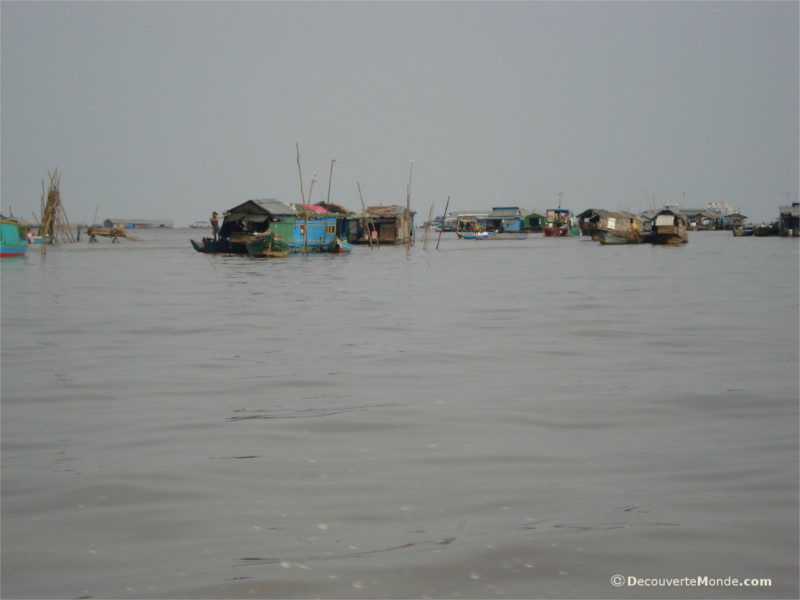
They use the Mekong for their daily hygiene, growing and transporting their crops, fishing, and selling their products at market. When the water levels vary, they simply move. Their floating houses allow them to perfectly adapt to the natural changes of the seasons.

The Mekong Delta, Vietnam
Before flowing into the South China Sea, the Mekong splits into numerous canals, forming the delta of South Vietnam, home to the ‘Rice Bowl’ of Asia. This is one of the most fertile regions in the world.
The canals create the backdrop to Vietnamese life and discovering them is a pleasure. The delta is a lively and dynamic outdoor water market. You’ll see mostly women, clothed in traditional tunics and conical hats, crying out their wares as they paddle by, every morning.
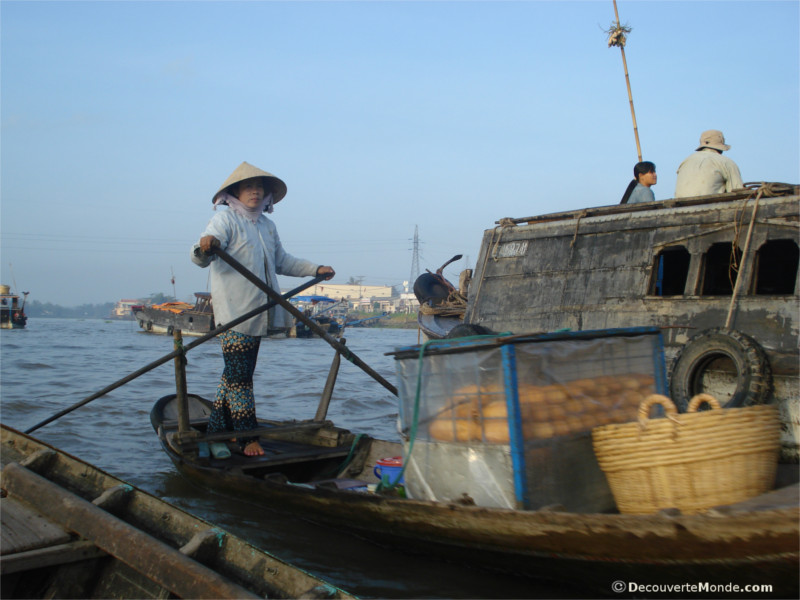
It’s easy to get groceries by simply navigating these small, labyrinthine waterways in the early morning. Pineapples, Tonkin soup, coconuts and other fresh, regional products abound. You can even have your breakfast on a floating barge.
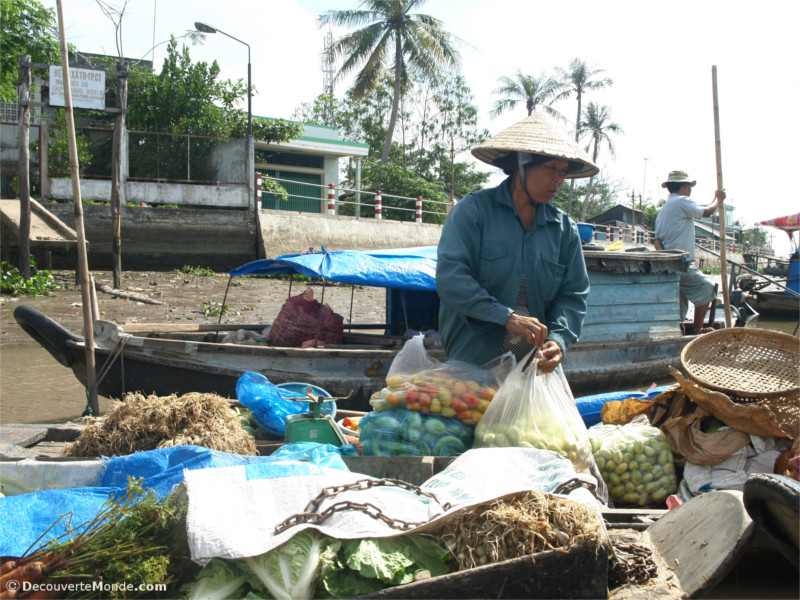
To discover the Mekong River is to travel to the very heart of the region. You’ll meet its inhabitants, appreciate their way of life, and see into their very essence. The Mekong truly is the backbone and the soul of Southeast Asia.

Remember to set off on your trip armed with travel insurance; it will ensure that your discovery of the Mekong runs smoothly!
Bon voyage!
Rachel


De très jolies photos.
J’ai beaucoup aimé la montagne du Dragon de Jade dans le Yunnan, c’est vraiment un endroit magnifique!
Merci Adrien 🙂
Elle est vraiment impressionnante cette montagne! On la voit de partout, elle est vraiment indissociable de cette partie du Yunnan. D’ailleurs, as-tu eu la chance d’aller visiter le Dr. Ho, reconnu internationalement pour sa médecine traditionnelle. Il aurait vaincu son cancer et traite des maladies à partir de plantes qu’il récolte sur les flancs de cette montagne. Tout un homme, je te l’assure.
Bonjour Rachel,
Désole de répondre que maintenant, je pensais que j’allais recevoir un mail pour m’avertir des nouveaux commentaires mais je ne l’ai pas reçu :-s.
Non je ne suis pas allé voir le Docteur Ho, d’ailleurs j’en avais même jamais entendu parlé jusqu’à aujourd’hui mais il a l’air d’être un homme passionnant.
Je m’en vais faire quelques recherches du coup haha
Bonjour Adrien,
Je crois par contre que le Dr. Ho est un peu victime de sa popularité. Il nous reçoit encore chez lui, mais de ce que j’avais lu sur lui, sur son approche, je crois que c’est un peu différent maintenant. Il charge ses herbes un prix de fou. Mais bon, simplement pour le rencontrer et visiter ça vaut bien le détour vers son village 🙂
Très belles photos, j’ai bien aimé ce court voyage en Asie du sud-est.
Merci beaucoup tanlid 🙂 Avez-vous déjà eu la chance de visiter cette région du monde? Ou est-ce dans vos projets? Pour ma part, ce fut un réel plaisir de vous partager ces endroits qui m’ont marqué. Je suis vraiment tombée sous le charme de l’Asie, autant de sa culture( ses cultures), ses paysages, mais également de la gentillesse de sa population. Si ce n’est pas déjà fait, je vous conseille vraiment un voyage dans cette région
Le Mékong et le Tonlé Sap
Voici un phénomène naturel et bien particulier. Le lac Tonlé est un immense bassin d’eau nourri par tous les affluents de la grande plaine et qui s’y jettent. Ce lac se prolonge par la rivière Tonlé jusqu’à Knhom Pen où il rejoint alors le Mékong.
Le Mékong, pour sa part, est le grand fleuve qui coule à l’est de ce lac. En période normale, ils ne s’influencent pas, mais lors des grandes crues, les eaux anormalement hautes du Mékong se jettent alors dans le Tonlé. L’effet le plus remarquable est que la superficie du lac Tonlé est multipliée par cinq couvrant ainsi une grande partie du Cambodge. Ce phénomène explique en partie pourquoi les gens se construisent des maisons très hautes sur pilotis et par “maison” il faut inclure, les commerces, l’essence, l’école, l’église, etc….
Tout à fait Jean-Claude! Ça devient vraiment un vrai village avec, comme tu le mentionnes, tout ce qui lui est associé. Mais sur l’eau.. ce qui est assez exceptionnel et intéressant. Intéressant aussi de voir comment les habitants s’adaptent à leur environnement ici et non le contraire comme on voit bien souvent dans d’autres endroits. D’ailleurs, le Tonlé Sap est aussi un régulateur de l’eau, car il inverse ses flots en période de grandes crues. Un phénomène naturel assez unique je crois. Merci beaucoup pour le commentaire à l’article 🙂
Salut Rachel, je te suis depuis un certain temps en lisant tes commentaires et ils nous seront très utiles pour notre préparation de notre tour du monde pour notre retraite.
Bonne continuité.
Bonjour Bertrand 🙂 Je suis bien contente que mes conseils puissent te donner un coup de main dans la préparation de ton voyage. Vous partez bientôt? Vous avez déjà une idée de ce que sera votre itinéraire?